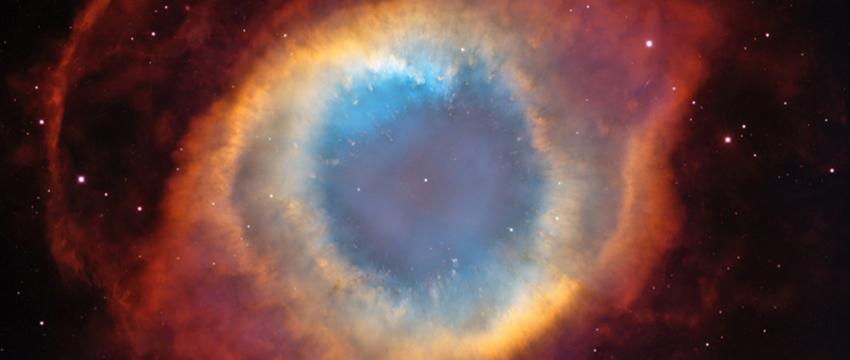
By Rebecca Peiffer, NASA Space Grant Intern, University Relations - Communications, October 16, 2015
Imagine that you could travel back in time four and a half billion years ago, when the solar system was still just a bunch of rocks and dust and gas mixing together. Imagine watching all those billions of years of history re-created in front of you.
Now, imagine that scientists are working to reconstruct this history with objects found here on Earth.
One of the scientists is Tom Zega, an assistant professor in the University of Arizona's Lunar and Planetary Laboratory. He studies "presolar grains," which are the remains of ancient stars preserved in meteorites.
These grains contain clues for scientists looking to build a narrative about the nearby stars before the birth of the solar system. Considering the scale of the undertaking, it is surprising that the evidence found in these presolar grains is microscopic.
Scientists find the grains in chunks of meteorite mostly made up of rocks that formed after the solar system’s creation.
"Those of us that are interested in understanding stardust basically have to find needles in the haystack," Zega says.
To help find the needles, scientists employ some clever techniques.
"We'll take a chunk of a meteorite, we’ll boil it up in these harsh, nasty, aggressive acids, and then we’ll generate a residue," Zega says.
The process eliminates some of the excess meteorite and increases the chances of finding a presolar grain. The grains have endured millions of years of exposure to cosmic rays and maintained their original form, so some will withstand the acid and remain in the residue.
Grains are only a few hundred nanometers wide. For context, a strand of human hair is 100,000 nanometers wide, and one nanometer is about half the width of a strand of DNA. To image the grains, scientists must use microscopes powerful enough to look at individual atoms.
Through this procedure, Zega and a team of researchers discovered the first grain of magnetite with confirmed presolar origins and published their results in the Astrophysical Journal. From a sample only 650 nanometers wide, Zega estimated the size and chemical composition of its parent star, a star that inhabited this part of the galaxy before the solar system came into existence.
Even the discovery of this grain was revealing. The chemical reaction that created the magnetite almost certainly required water vapor. This is one of the first experimental confirmations of water vapor around an ancient star.
With the right approach, Zega says he believes presolar grains could even help construct a timeline for the history of our local part of the galaxy.
"We know the galaxy itself is about 13 billion years old, and we know the solar system is four and a half billion years old, but there’s a lot of billions of years in between there for things to happen," he says.
If we could age-date these grains the way we age-date rocks on Earth, then we could start to document the astrophysical events that took place in this period. That's one way studies of presolar grains can go beyond traditional observations through telescopes.
With meteorites, researchers can do more than observe stardust — they can actually hold it in their hands.
"It's pretty amazing," Zega says. "After 17 years in the field, I'm still fascinated by the fact that I can hold a piece of the solar system in my hand, and I can analyze it in the laboratory at the atomic level."
This excitement and curiosity inspires missions such as OSIRIS-REx, which aims to bring back samples of an asteroid for further study on Earth. For Zega and people in his field, that mission is like a dream come true.
"Everything that didn't go into forming the sun or the planets was left over in the form of asteroids and meteors and dust," he says. "So you can think of that as a time capsule that's just sitting out there, and if we could we'd fly out there and grab samples of it. We'd rewrite the books."
For the next step in his research, Zega would like to collect more samples of presolar grains and look at the trends among them.
That could help answer some of the big questions in planetary science about the origin of the solar system. In particular, the grains offer an estimate for how many stars injected their matter into the early solar system — and what kind of stars they were.
"It just remains to be seen as time progresses whether we can come up with answers to some of these questions," Zega says, smiling. "But we keep asking them."

